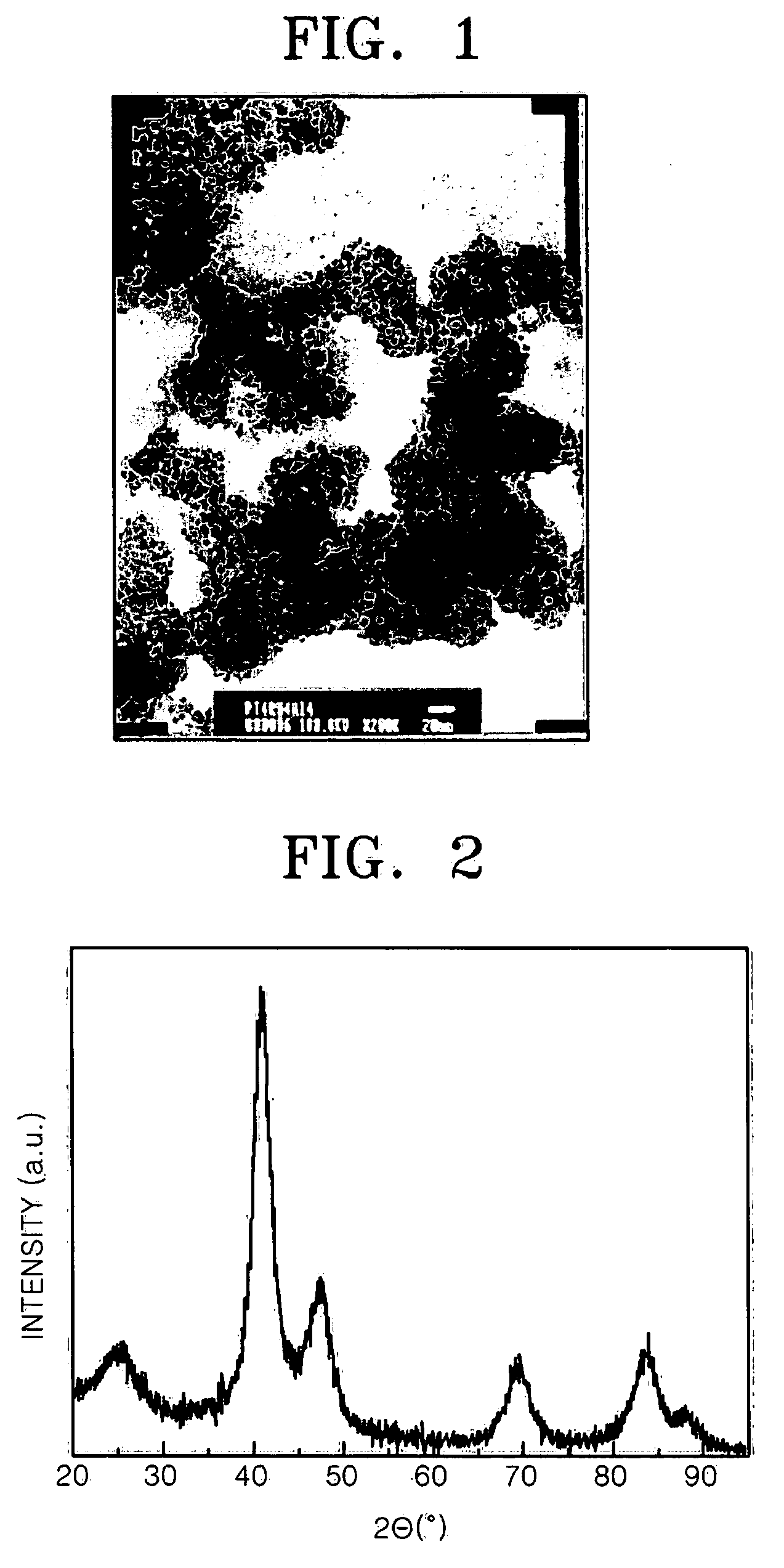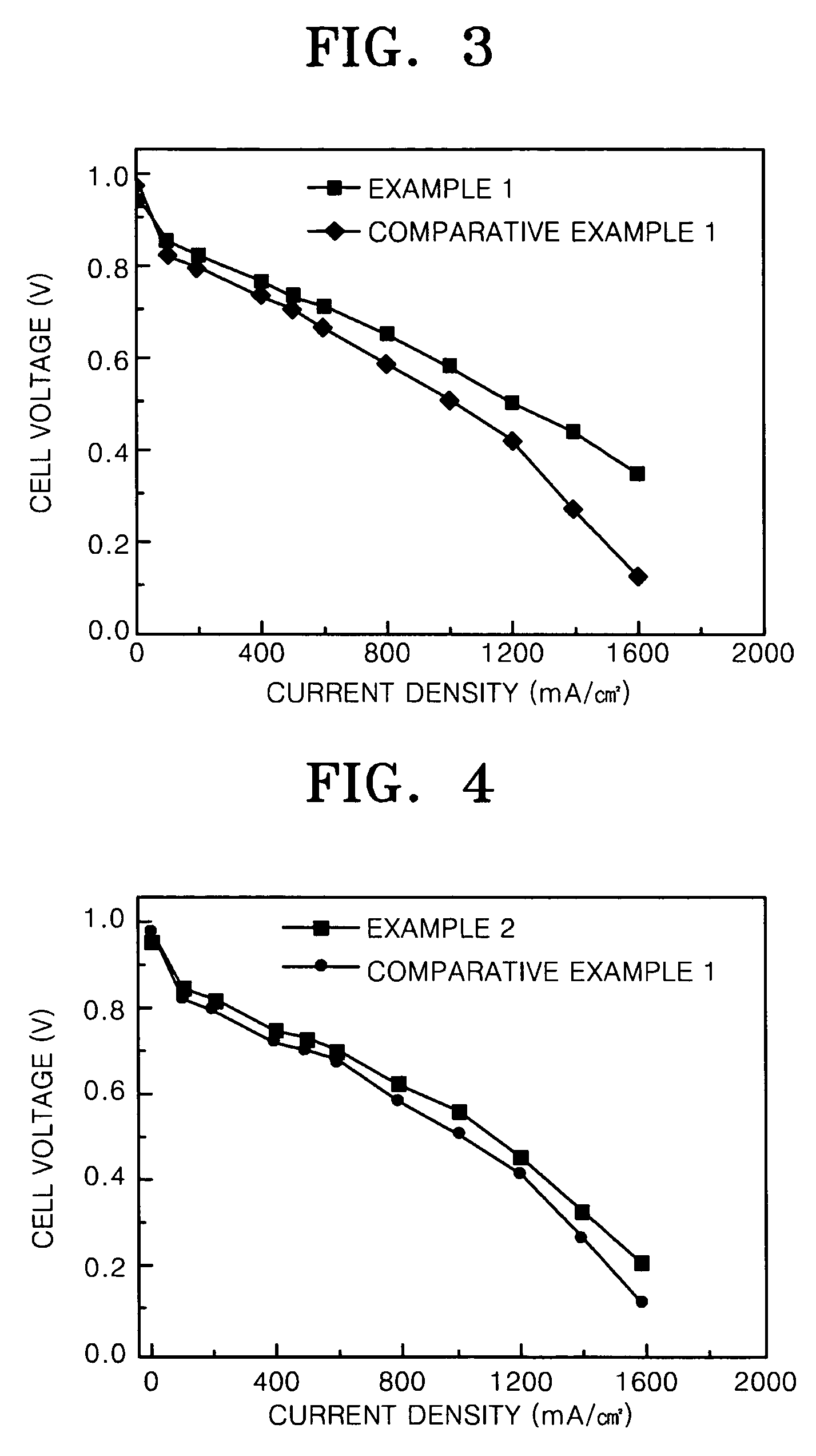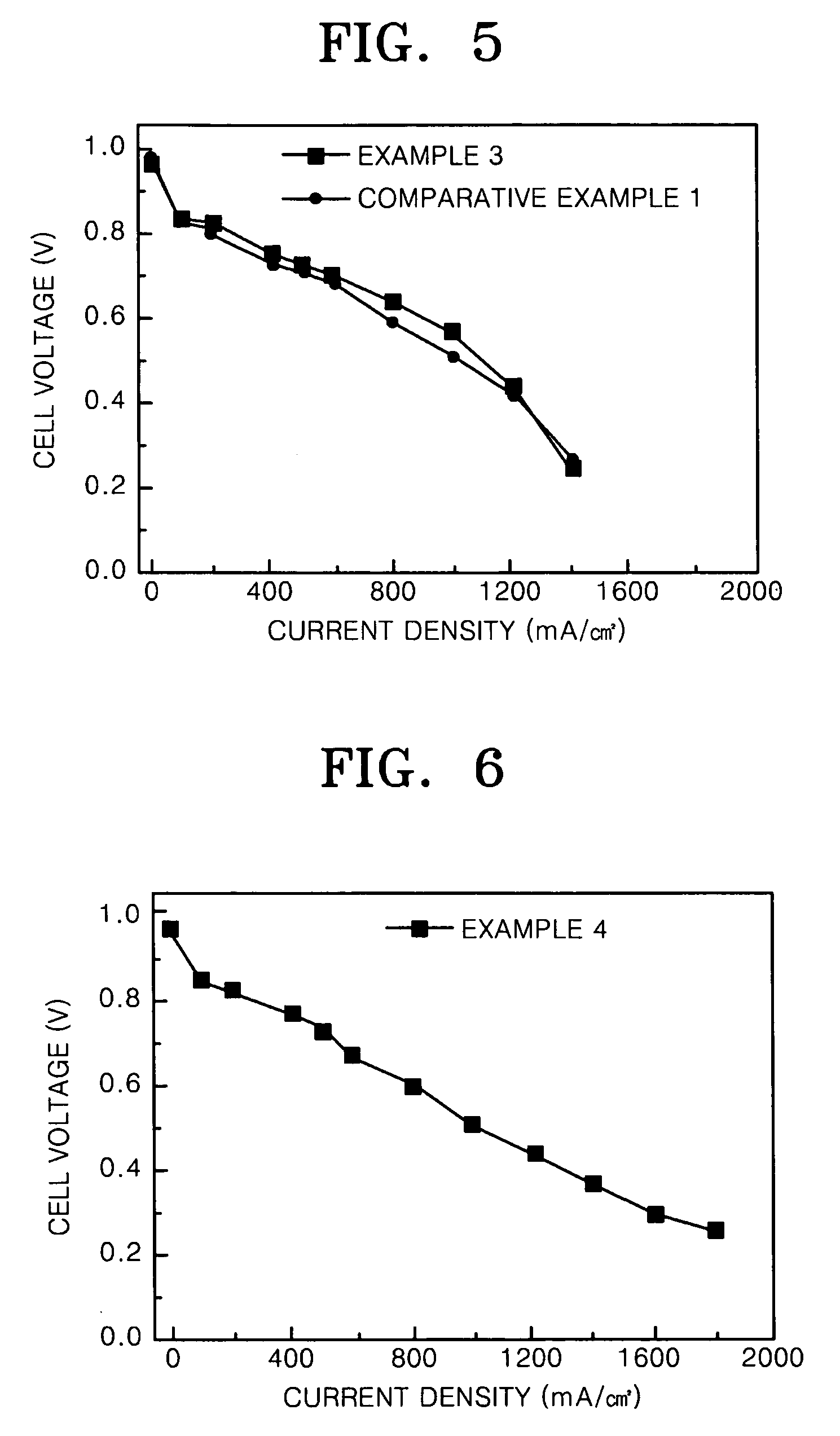PtNi based supported electrocatalyst for proton exchange membrane fuel cell having CO tolerance
a proton exchange membrane and electrocatalyst technology, applied in the direction of cell components, physical/chemical process catalysts, sustainable manufacturing/processing, etc., can solve the problems of low energy efficiency, reduced power output, and few problems to be solved, so as to improve co tolerance and facilitate catalyst preparation. , the effect of simple process
- Summary
- Abstract
- Description
- Claims
- Application Information
AI Technical Summary
Benefits of technology
Problems solved by technology
Method used
Image
Examples
example 1
Pt1Ru1Ni1 Supported Electrochemical Catalyst
[0043] 1 g of Vulcan XC-72 was added to 100 mL of 95 volume % ethyleneglycol aqueous solution and the resultant solution was stirred to prepare slurry A. 12.4 mL of a hexachloroplatinic acid solution in ethyleneglycol (29.6 mgPt / mL), 51.35 mL of a ruthenium (III) chloride solution in ethyleneglycol (3.7 mgRu / mL), and 11 mL of a nickel nitrate aqueous solution (10 mgNi / mL) were mixed and the resultant mixture was added to the slurry A. 2.5 M NaOH solution in ethyleneglycol was added to the resultant suspended solution to obtain pH 12. A microwave having a frequency of 2.45 kHz and a power output of 700 W was irradiated to the resultant solution of pH 12 for 1.5 minutes. The slurry was cooled to room temperature and a 3M HCl solution was added thereto until pH of the slurry was decreased to 0.5. A solid phase was separated from the slurry, washed until chloride ions were completely removed, and then dried. The dried solid phase was heat tre...
example 2
PtRuNi Supported Electrochemical Catalyst
[0048] 1 g of Vulcan XC-72 was added to 100 mL of 95 volume % ethyleneglycol aqueous solution and the resultant solution was stirred to prepare slurry A. 27.86 mL of a hexachloroplatinic acid solution in ethyleneglycol (29.6 mgPt / mL), 115.47 mL of a ruthenium (III) chloride solution in ethyleneglycol (3.7 mgRu / mL), and 24.81 mL of a nickel nitrate aqueous solution (10 mgNi / mL) were mixed and the resultant mixture was added to the slurry A. Sodium carbonate was added to the resultant suspended solution to obtain pH 10. A microwave having a frequency of 2.45 kHz and a power output of 700 W was irradiated to the resultant solution of pH 10 for 15 minutes. The slurry was cooled to room temperature and a 3M HCl solution was added thereto until pH of the slurry was decreased to 0.5. A solid phase was separated from the slurry, washed until all chloride ions were removed, and then dried. The dried solid phase was heat treated at 500° C. for 4 hours...
example 3
Pt1Ni1Ir2 Supported Electrochemical Catalyst
[0050] 1 g of Vulcan XC-72 was added to 100 mL of deionized water and the resultant solution was stirred to prepare slurry A. 6.89 mL of a solution prepared by dissolving a hexachloroplatinic acid in ethyleneglycol (29.6 mgPVmL), 11.48 mL of a Iridium potassium chloride acid solution in ethyleneglycol (35 mgIr / mL), and 6.13 mL of a nickel nitrate aqueous solution (10 mgNi / mL) were mixed and the resultant mixture was added to the slurry A. NaOH was added to the resultant suspended solution to obtain pH 12. A microwave having a frequency of 48.2 kHz and a power output of 400 W was irradiated to the resultant solution of pH 12 for 30 minutes. The slurry was cooled to room temperature and a 3M HCl solution was added thereto until pH of the slurry was decreased to 2. A solid phase was separated from the slurry, washed until all chloride ions were removed, and then dried. The dried solid phase was heat treated at 600° C. for 3 hours under a nit...
PUM
| Property | Measurement | Unit |
|---|---|---|
| frequency | aaaaa | aaaaa |
| volume % | aaaaa | aaaaa |
| frequency | aaaaa | aaaaa |
Abstract
Description
Claims
Application Information
 Login to View More
Login to View More - R&D
- Intellectual Property
- Life Sciences
- Materials
- Tech Scout
- Unparalleled Data Quality
- Higher Quality Content
- 60% Fewer Hallucinations
Browse by: Latest US Patents, China's latest patents, Technical Efficacy Thesaurus, Application Domain, Technology Topic, Popular Technical Reports.
© 2025 PatSnap. All rights reserved.Legal|Privacy policy|Modern Slavery Act Transparency Statement|Sitemap|About US| Contact US: help@patsnap.com



